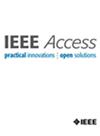Evaluation of Uplink Video Streaming QoE in 4G and 5G Cellular Networks Using Real-World Measurements
IF 3.4
3区 计算机科学
Q2 COMPUTER SCIENCE, INFORMATION SYSTEMS
引用次数: 0
Abstract
In this study, we propose a comprehensive method for evaluating the Quality of Experience (QoE) for uplink video streaming in commercial 4G and 5G cellular networks. Uplink video streaming is becoming increasingly important due to applications such as live content creation and remote operations. However, commercial networks are primarily optimized for downlink performance, posing significant challenges for achieving high uplink throughput. We investigate the factors affecting uplink QoE, including signal strength, network congestion, carrier aggregation, and coverage. Our methodology involves comprehensive data collection from network elements and streaming servers, encompassing RF parameters, IP packet data, and performance metrics such as throughput and latency. We employ full-reference metrics such as Video Multi-Method Assessment Fusion (VMAF), Structural Similarity Index (SSIM), and Peak Signal-to-Noise Ratio (PSNR) to assess video quality and address challenges in frame alignment for accurate evaluation. Our dataset includes video recordings, streamed video files, QoE metrics, IP packet data, and Radio Access Network (RAN) measurements, enabling robust regression analysis and machine learning for QoE prediction. We propose a system architecture for real-time data collection and streaming, integrating live video capture, streaming server setup, and network measurement tools. The results highlight the relationship between network conditions and video quality, demonstrating the impact of factors like path loss and Physical Resource Block (PRB) allocation and handover on QoE. This study provides valuable insights and practical solutions for optimizing uplink video streaming QoE in current and future cellular networks.求助全文
约1分钟内获得全文
求助全文
来源期刊

IEEE Access
COMPUTER SCIENCE, INFORMATION SYSTEMSENGIN-ENGINEERING, ELECTRICAL & ELECTRONIC
CiteScore
9.80
自引率
7.70%
发文量
6673
审稿时长
6 weeks
期刊介绍:
IEEE Access® is a multidisciplinary, open access (OA), applications-oriented, all-electronic archival journal that continuously presents the results of original research or development across all of IEEE''s fields of interest.
IEEE Access will publish articles that are of high interest to readers, original, technically correct, and clearly presented. Supported by author publication charges (APC), its hallmarks are a rapid peer review and publication process with open access to all readers. Unlike IEEE''s traditional Transactions or Journals, reviews are "binary", in that reviewers will either Accept or Reject an article in the form it is submitted in order to achieve rapid turnaround. Especially encouraged are submissions on:
Multidisciplinary topics, or applications-oriented articles and negative results that do not fit within the scope of IEEE''s traditional journals.
Practical articles discussing new experiments or measurement techniques, interesting solutions to engineering.
Development of new or improved fabrication or manufacturing techniques.
Reviews or survey articles of new or evolving fields oriented to assist others in understanding the new area.
 求助内容:
求助内容: 应助结果提醒方式:
应助结果提醒方式:


